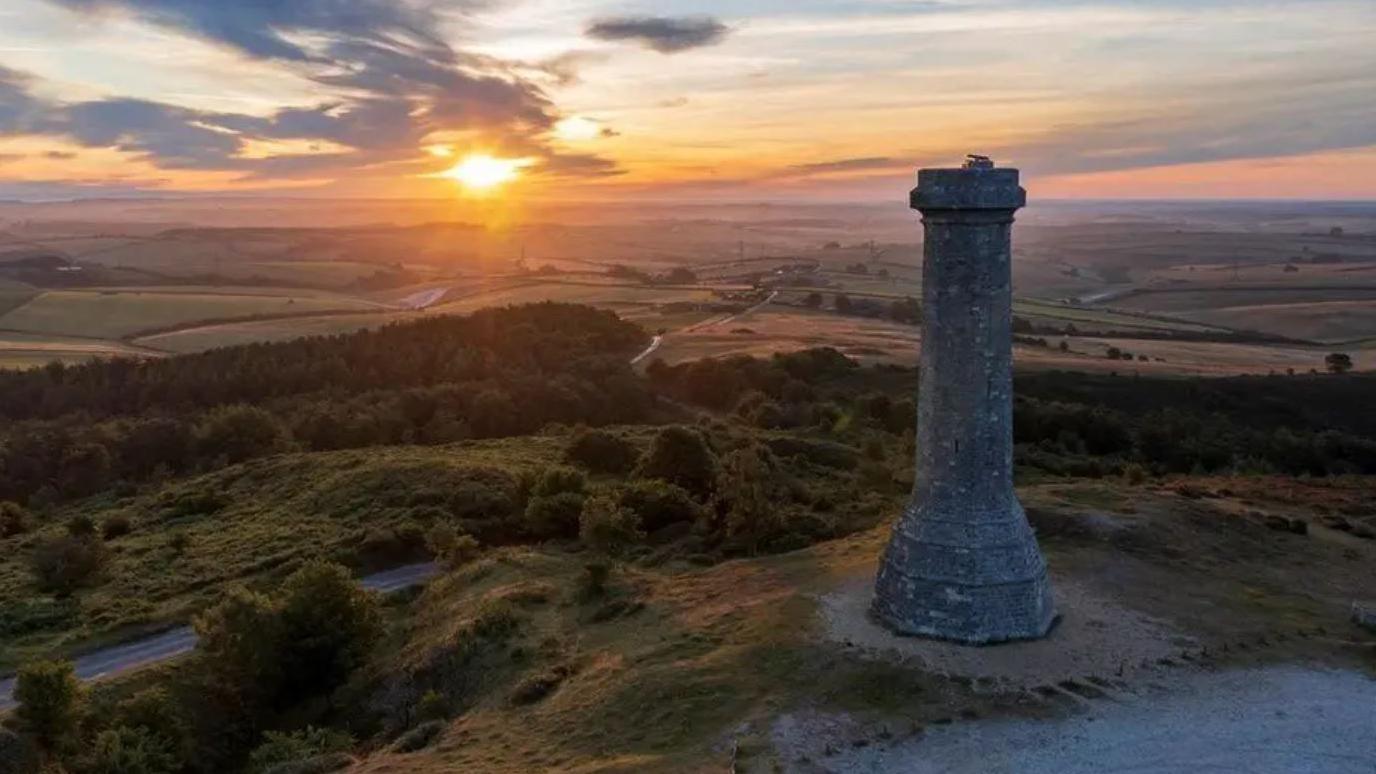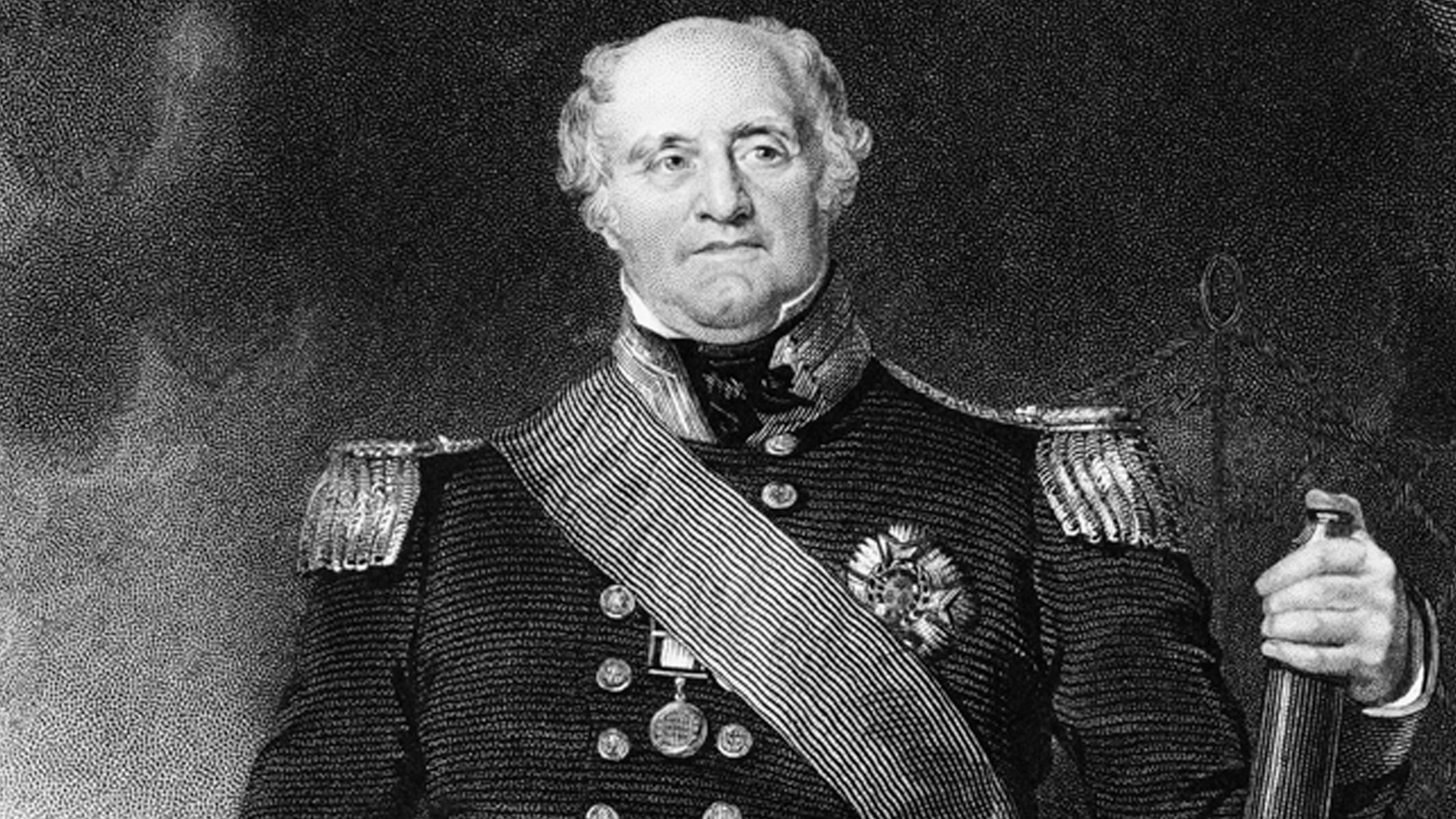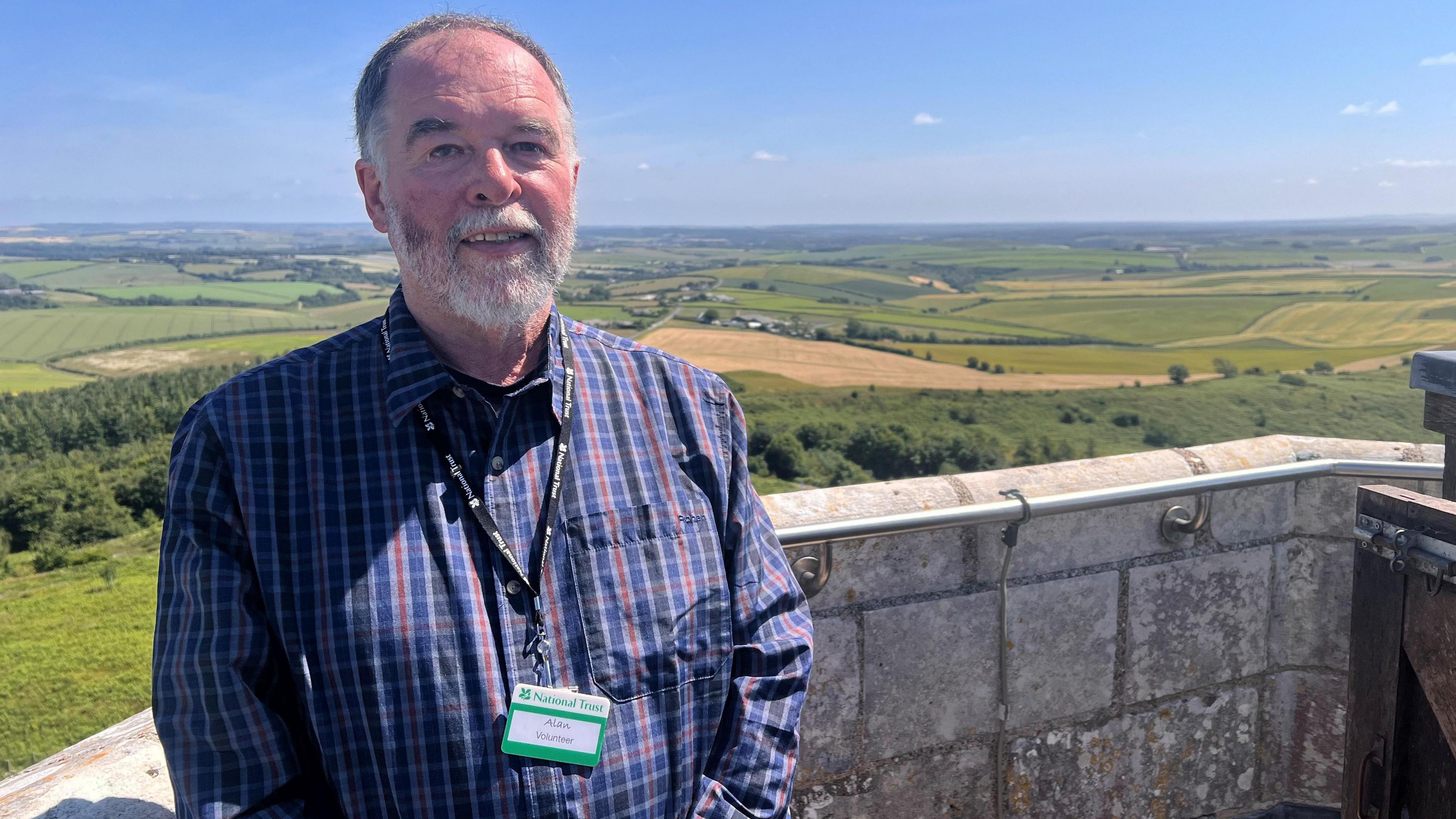The real Thomas Hardy of Dorset's Hardy Monument

The Hardy Monument stands at one the highest points in Dorset
- Published
At one of the highest points in Dorset, above the village of Portesham, stands a monument to Thomas Hardy.
The stone tower, built in 1844, was not built to remember the world famous English novelist and poet of the same name, but another Dorset son who went to sea at the age of 12 and eventually ascended to the top of the British Navy.
Vice-Admiral Sir Thomas Masterman Hardy's most famous linguistic contribution to history is neither books nor poems but three simple words: "Kiss me, Hardy."
BBC Solent's Steve Harris visited the tower to find out more about the man and how the monument came about.

Vice-Admiral Sir Thomas Masterman Hardy grew up in Portesham
As Flag Captain of HMS Victory at the Battle of Trafalgar, it was in this Hardy's arms that his longstanding friend Admiral Lord Nelson died, reportedly uttering the iconic phrase.
The monument cost £450 to build 180 years ago and has been owned and maintained by the National Trust since 1938.
Alan Hocking has been showing people the views from the base and the top of the monument for nine years.
With no large national memorial to Hardy, his three daughters wanted one and asked local people to put money in, he says.
"At that time it would have been called subscription, we'd probably call that crowdfunding these days, and that made enough money to pay for an architect and for the build," he explains

Alan Hocking has been showing visitors around the tower for nearly a decade
Ascending to the top of the 72ft (22m) tall tower via 122 steps and six complete 360 degree rotations, visitors emerge at one of Dorset's highest points above sea level.
The brief to the architect said the structure should be able to be used as a navigation aid, says Mr Hocking.
"If you look at it from a distance, you can see that it's built like a naval telescope, a spyglass as you might call it, the fine eyepiece at the top, the wide objective lens at the bottom," he continues.
"It's octagonal, so the sides of the monument are the cardinal and the ordinal points of the compass."
The Hardy of Hardy Monument
Being in Dorset, the shadow of the author Thomas Hardy is never far away.
Born and raised in the county, the author finally settled in Dorchester and much of his work drew inspiration from the coastal county in the south of England.
"[People] arrive saying, 'I didn't know there was a monument like this to Hardy'," Mr Hocking says.
When he asks which Hardy they are thinking of, they often say it is the author.
But there is a link, he says, explaining that the author's novel The Trumpet-Major, published in 1880, is "actually based on this ridgeway, Portesham, and what Hardy called Overcombe".
In the book, "one of the sailors walks the ridgeway to meet Captain Hardy at his home in Portesham", he says.
But while Dorset may lay claim to two famous Thomas Hardys, Hardy Monument stands firmly in remembrance of the naval hero.
Secret Dorset
Explore fascinating stories from Dorset
Listen and subscribe for the latest episode of Secret Dorset
Get in touch
Do you have a story BBC Dorset should cover?
You can follow BBC Dorset on Facebook, external, X (Twitter), external, or Instagram, external.
Related topics
- Published28 June 2010
- Published21 September 2011
- Published28 March 2011